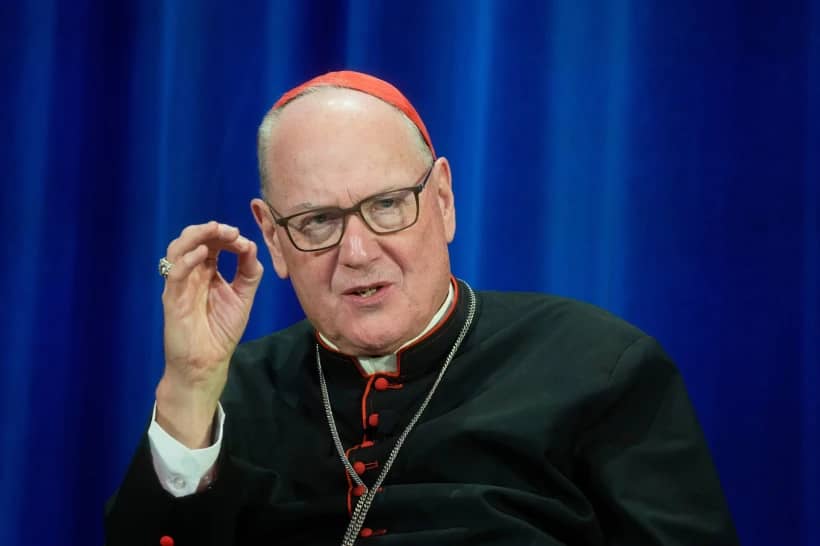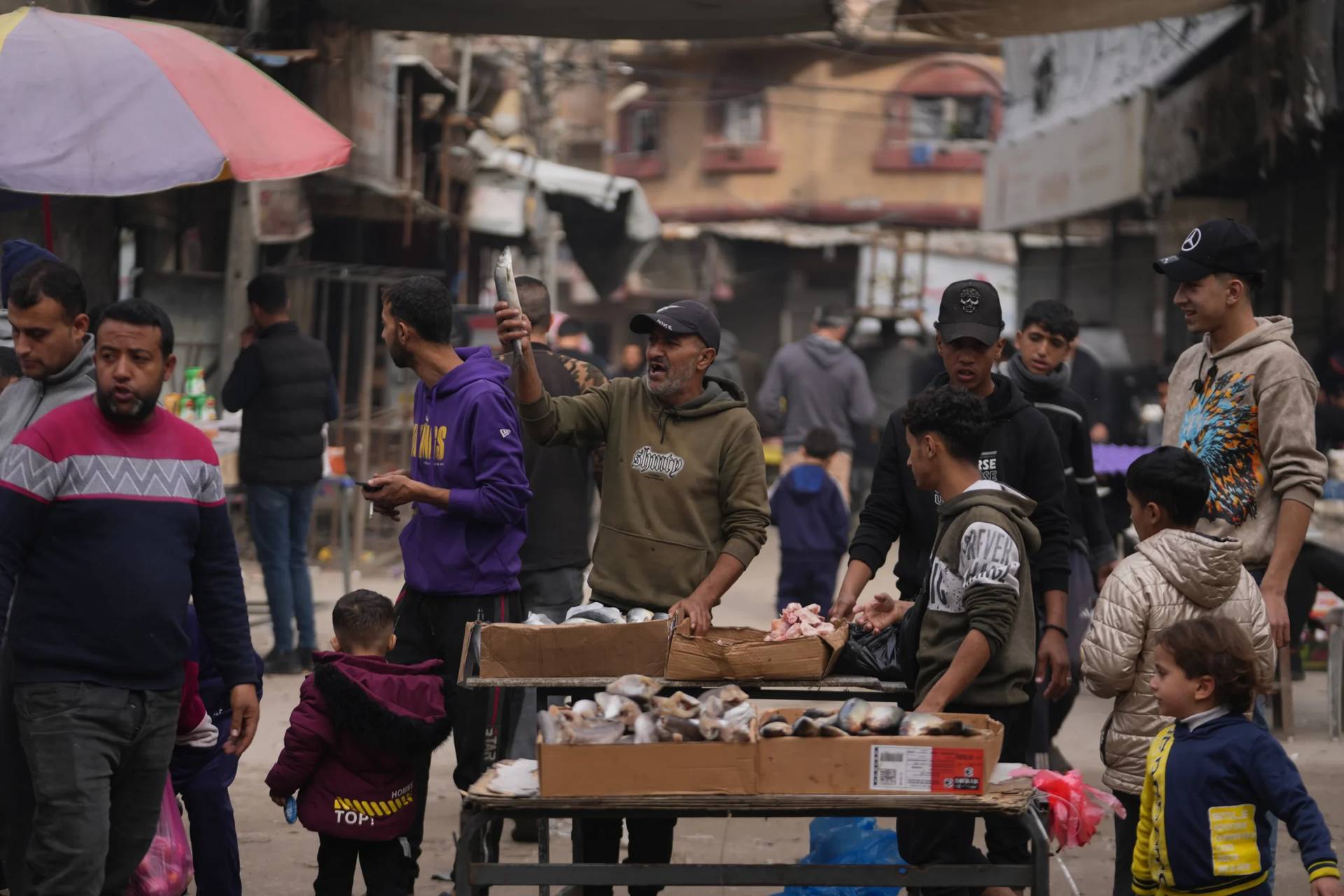ROME – Vatican-watchers love to speculate about the next pope, and the recent death of Pope Benedict XVI was a reminder to pundits everywhere to make sure their handicapping lists are up to date. As the conversation stands today, perhaps the hardest question to answer is who the “opposition” candidates are.
We know there’s a conservative wing of the Catholic Church disenchanted with some aspects of the Pope Francis agenda, and we also know that even in a College of Cardinals dominated by Francis appointees, that outlook still has a following. What’s harder to figure out is who these “discontinuity” voters might rally around, since most of the identifiable conservatives among the current crop of cardinals are either considered too extreme, or simply lacking the proper gravitas, to be pope.
Upon reflection, there’s actually a good reason why that’s so: Several figures to whom the Catholic center-right would be attracted, and who, under other circumstances, would already be cardinals, have been excluded from the club.
Consider these five prelates, who, if they were cardinals, would figure prominently in the discussion:
- Archbishop Anthony Fisher of Sydney, Australia, 62
- Archbishop Jose Gomez of Los Angeles, 71
- Archbishop Ignatius Kaigama of Abuja, Nigeria, 64
- Archbishop Marek Jędraszewski of Krakow, Poland, 73
- Archbishop Emeritus Tadeusz Kondrusiewicz of Minsk, Belarus, 77
All five of these prelates are in archdioceses normally led by a cardinal. All are considered moderate-to-conservative, and all are serious personalities with the formation and experience to be taken seriously.
Together, these five figures have been passed over 36 times for a cardinal’s red hat. Kondrusiewicz leads the pack, having seen 12 consistories come and go since his appointment as an archbishop without making the cut, followed by Gomez, who’s been left off the guest list 10 times. Fisher has missed seven consistories, Jędraszewski five and Kaigama two.
Fisher may be the most compelling example of a “cardinal who isn’t” who, under other circumstances, might be a leading papal contender.
A Dominican, Fisher has serious intellectual credentials, having earned a doctorate in philosophy from Oxford, specializing in bioethics. Politically he’s seen as a moderate conservative, having begun his career in Australia as a protégé of the late Cardinal George Pell – indeed, when Fisher was named an auxiliary bishop of Sydney in 2003 at the tender age of 43, he was informally dubbed “Boy George.”
Over the years, Fisher has sometimes been described as “Pell with a smile” – whereas Pell could be brash and combative, Fisher comes off as gentle, humble, and mild-mannered, while being no less stringent in his defense of Catholic orthodoxy.
Moreover, Fisher also has a compelling personal narrative. In 2015 he suffered an attack of Guillain-Barré Syndrome, an auto-immune disorder that damages the nervous system. He was left all but paralyzed from the neck down and in extreme pain, and had to spend the next five months in the hospital relearning how to walk, how to hold cutlery, and all the basic tasks most people take for granted.
Fully recovered today, Fisher cited the experience in 2021 to explain his opposition to a draft euthanasia law in Australia.
For his part, Kaigama probably would be a much-discussed contender as a “black pope” if he were a cardinal. He’s a graduate of Rome’s Jesuit-run Gregorian University and former president of both the Nigerian bishops’ conference and the episcopal conference of West Africa.
Kaigama gets high marks for pursuing inter-faith dialogue in Nigeria, which has the largest mixed Christian and Muslim population in the world, while at the same time being outspoken in condemning anti-Christian violence.
In 2014 Kaigama defended a controversial Nigeria law that recriminalized homosexuality. In October of the same year, he participated in Pope Francis’s Synod of Bishops on the family, complaining that Western governments and NGOs often attempt to force African nations to adopt a liberal sexual morality as a condition for humanitarian aid.
“We get international organizations, countries, and groups that entice us to deviate from our cultural practices and traditions and even our religious beliefs because they think that their views should be ours, their opinions and their concept of life, should be ours,” Kaigama said.
“But, as they say, we’ve come of age,” he said.
In Los Angeles, the Mexican-born Gomez would be the lone Hispanic among the American cardinals, had he ever been given the red hat, and has been a leader in the US church on immigration debates. He’s seen as a conservative because of his background in Opus Dei and a protégé of Archbishop Charles Chaput, during the time Gomez served as Chaput’s auxiliary bishop in Denver.
During his 2019-2022 term as president of the U.S. Conference of Catholic Bishops, Gomez made headlines for his blunt challenge to US President Joe Biden, warning in a statement for Biden’s inauguration that the new chief executive favors “certain policies that would advance moral evils and threaten human life and dignity, most seriously in the areas of abortion, contraception, marriage, and gender.”
Jędraszewski was a personal friend of the late Pope John Paul II, have gotten to know then-Cardinal Karol Wojtyla in the mid-1970s when Jędraszewski was living at the Polish College in Rome and Wojtyla was a frequent guest. Like John Paul, Jędraszewski made a point of studying contemporary secular philosophers, doing graduate work on Gabriel Marcel, Paul Riceour, Jean-Paul Sartre and Emmanuel Levinas.
When Jędraszewski was named to Krakow in 2017, one commentator described him as “a deeply orthodox culture warrior unafraid of vocally expressing unpopular truths.” In the years since, Jędraszewski has articulated conservative positions on abortion, IVF treatments, homosexuality and gender theory, and even the celebration of Halloween.
As for Kondrusiewicz, he’s a hero to the anti-Communist wing of the Church, having successfully led the small Catholic community in Russia for two decades, including five years as the Archbishop of the newly created “Archdiocese of the Mother of God at Moscow,” and then heading up the church in the Russian satellite state of Belarus.
Among critics of Pope Francis, Kondrusiewicz is something of a cult hero.
In August 2020 he was barred from reentering Belarus after visiting Poland, due to his support for protests against elections that saw President Alexander Lukashenko returned to power despite widespread complains of fraud and vote-rigging. In the end, Kondrusiewicz was allowed to re-enter the country in late December, and just ten days later, on Jan. 3, Pope Francis accepted his resignation – prompting speculation that Francis had cut a secret face-saving deal with Belarus, getting Kondrusiewicz back into the country on the condition that he would swiftly be removed from power.
While Kondrusiewicz’s age at 77 might be considered a drawback, it’s worth remembering that the last two popes, Benedict XVI and Francis, were elected at 78 and 76 respectively.
Of course, it’s theoretically possible one or more of these prelates might emerge as a papal contender even without a red hat. Under church law, the only requirements to be pope are to be male and baptized. Still, the last time a pope was elected from outside the College of Cardinals was Urban VI in 1378, and it’s not exactly the most promising precedent since it triggered the Great Western Schism.
On the other hand, we all thought papal resignation was a thing of the past too until Benedict XVI did it, so one shouldn’t be overly dogmatic. In the meantime, it’s at least worth pondering how different the politics of papal succession might be if these five figures were more clearly in the mix.














